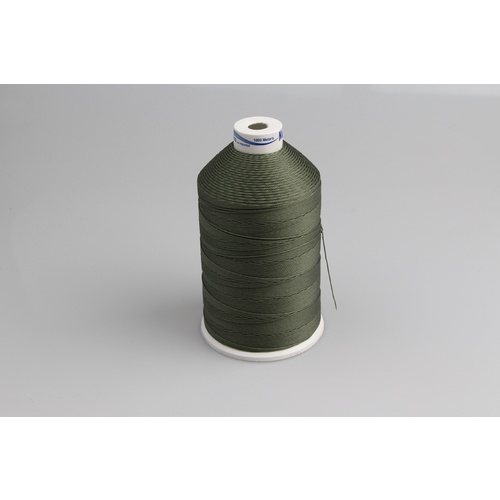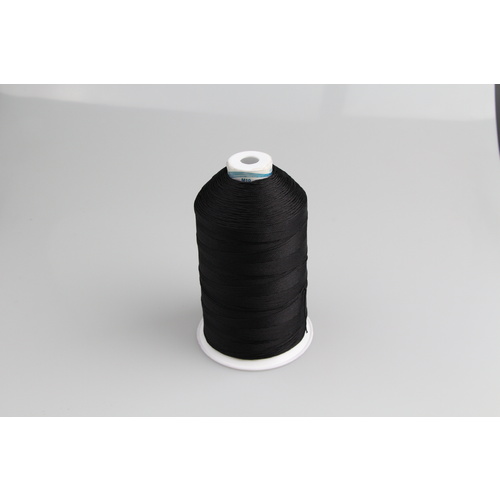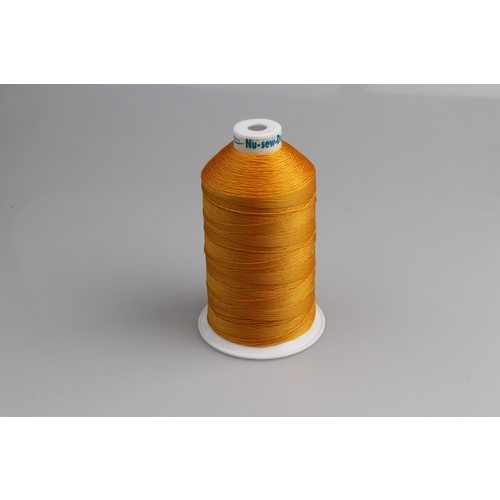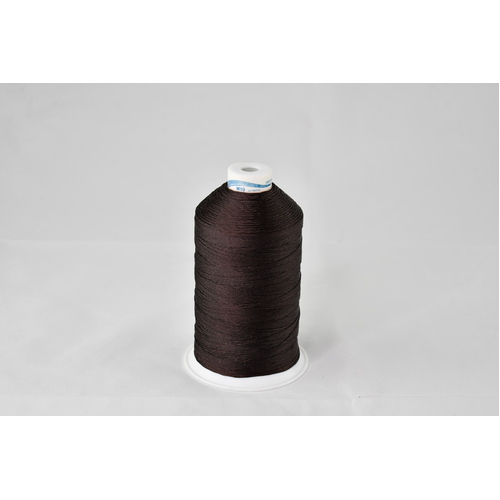WEBBING SEWING THREAD
Whether you're crafting safety harnesses, outdoor gear, luggage straps or military equipment, one thing is certain—webbing sewing thread is not your average sewing supply. Unlike light domestic threads used for garments or simple crafts, sewing thread for webbing is designed to handle extreme tension, heavy loads, and harsh environments. But how do you choose the right one? And what makes it so different from standard thread?
In this guide, we’ll explore what sets webbing sewing thread apart, the types available, their applications, and how to make the best choice for your specific needs—whether you're a hobbyist, a professional upholsterer, or part of the manufacturing industry.
What Is Webbing Sewing Thread?
Webbing sewing thread is a heavy-duty thread specifically engineered for use in stitching webbing—flat strips of woven fabric often made from nylon, polyester or polypropylene. Webbing is commonly found in seatbelts, cargo straps, backpacks, pet harnesses, and tactical gear. As such, the thread used to sew it needs to be just as tough.
Unlike standard threads, sewing thread for webbing must withstand:
- High tensile loads
- Abrasion
- UV exposure
- Moisture and mildew
- Friction during sewing
This means the composition, thickness, coating, and even the twist of the thread can have a massive impact on the final product’s durability and safety.
Common Materials Used in Webbing Sewing Thread
There are several types of thread used for sewing webbing, each with its strengths and weaknesses. Let’s take a look at the most common ones used in Australia:
1. Polyester Thread
A popular choice for sewing thread for webbing, polyester offers a great balance between strength, UV resistance and affordability. It’s also resistant to shrinking and moisture, making it ideal for outdoor use.
Best for: Outdoor gear, marine applications, pet leashes and harnesses.
2. Nylon Thread
Nylon is known for its excellent strength and elasticity. It’s ideal when some give is needed in the stitching. However, it tends to degrade faster in UV light compared to polyester.
Best for: Luggage, tactical gear, seatbelt webbing, and industrial strapping.
Thread Sizes Matter
When choosing webbing sewing thread, size (often referred to as ticket size or tex size) matters. Larger threads offer more strength but require industrial-grade machines and larger needles.
- Tex 70 – 90: Suitable for lighter-duty webbing or standard sewing machines (if capable).
- Tex 135 – 210: Medium-heavy duty; commonly used in backpacks, soft luggage, and straps.
- Tex 270 – 415: For serious industrial applications such as cargo tie-downs or climbing harnesses.
Your thread size must match your sewing machine capabilities and needle size to avoid skipped stitches or tension problems.
Choosing the Right Needle
Don’t overlook your needle choice—it plays a crucial role when sewing webbing. For heavy-duty threads, you’ll typically need:
- Industrial sewing machines
- Needles between size 18 and 24
- Leather, denim or wedge point tips depending on the webbing material
Using the wrong needle can not only damage your machine but also compromise the strength of the stitch.
Common Applications of Webbing Sewing Thread
Across Australia, webbing products are essential in a variety of industries. Here’s how sewing thread for webbing is used:
● Outdoor and Adventure Gear
In a country known for rugged terrain and outdoor lifestyles, webbing is everywhere—from camping chairs and hiking packs to kayaks and rooftop tents. Strong thread ensures the gear survives Australia’s harsh weather and frequent use.
● Automotive and Marine
Seatbelts, tow straps, boat covers, and tie-downs all require extremely durable stitching. In marine applications, polyester threads are especially valued for their saltwater resistance.
● Safety Equipment
Workplace safety harnesses, fall arrest systems and load-bearing straps must be stitched with thread that meets strict safety standards. Quality assurance here is non-negotiable.
● Military and Tactical Use
Australian Defence Force gear such as MOLLE systems, pouches, and webbed belts rely heavily on aramid or heavy-duty nylon threads for strength and durability.
Tips for Sewing Webbing Like a Pro
Sewing webbing isn’t quite like stitching cotton. Here are a few tips to get clean, strong seams every time:
- Use a Walking Foot: This helps evenly feed the thick layers through the machine.
- Reinforce with Box-X Stitching: This pattern distributes tension across a wider area.
- Adjust Tension Settings: Heavier thread often requires tweaks to the upper thread tension.
- Test on Scraps First: Always do a test run with your selected thread, needle, and webbing combination.
- Use a Thread Lubricant: This can reduce friction and heat build-up when sewing thick materials.
Buying Webbing Sewing Thread in Australia
When sourcing webbing sewing thread in Australia, it's important to buy from suppliers who understand the requirements of high-stress stitching. Look for businesses that offer:
- Detailed thread specs (tex size, tensile strength, UV resistance)
- Compatibility advice for specific machines
- Threads suited for local environmental conditions
Whether you’re an industrial manufacturer in Sydney or a DIY enthusiast in rural WA, finding the right sewing thread for webbing can make or break the reliability of your project.
Choosing the right webbing sewing thread is crucial for any project that involves strength, safety, and durability. From polyester and nylon to high-performance aramid threads, there’s a wide range of options tailored to specific needs and environments.
Investing in quality sewing thread for webbing not only improves the lifespan of your gear but also ensures the safety of the people using it. Don’t cut corners when it comes to materials—especially when your work is designed to carry weight, handle pressure, or save lives.
Whether you’re crafting climbing gear, boat straps, or tactical accessories, remember: it all starts with the right thread.
Sewing Threads at Vardhman A&E Threads
If you're looking for high-quality sewing threads for your webbing projects, Vardhman A&E offers a premium selection. Whether you need Gutterman Tera 80 for precise stitching or heavy-duty bonded polyester thread for industrial applications, we provide reliable options to suit your needs.
Why Choose Vardhman A&E?
- High-quality materials – Threads designed for durability and professional results.
- Wide range of options – From polyester to waxed linen threads.
- Trusted by professionals – Used in industries like automotive, fashion, and saddlery.
When working with webbing projects, investing in the right sewing thread ensures your project stands the test of time. Visit Vardhman A&E to explore their range of sewing threads today!










